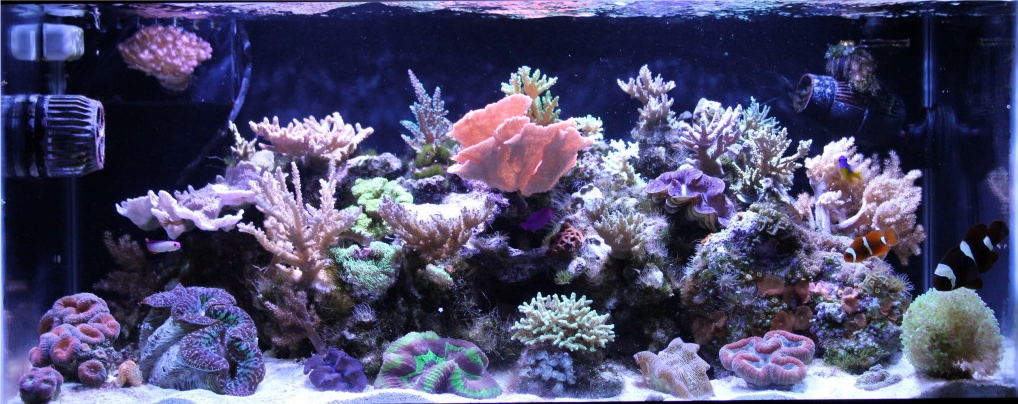Stunning 40-Gallon Reef Tank – steely185's TOTM | NanoReef

Tank Specifications
Volume: 40 Gallons / 151 Liters
Dimensions (L × W × H):
36.0" ×
18.0" ×
12.0"
91.4cm ×
45.7cm ×
30.5cm
Equipment List
No equipment information available
Frequently Asked Questions
What is the maintenance routine for my reef tank?
A successful maintenance routine should include regular water changes and monitoring of water parameters. The tank owner performs ten-gallon water changes every two weeks, which helps replenish nutrients and maintains good water quality. It's also crucial to maintain good water flow and stable lighting conditions.
How do I maintain calcium, alkalinity, and pH levels?
Calcium, alkalinity, and pH can be maintained by using Kalkwasser in your top-off water. An auto top-off system will automatically replenish evaporated water, while continuously adding small amounts of Kalkwasser helps keep these parameters stable.
What should I do if I experience algae growth?
For specific types of algae, such as Dictyota, using Algae Fix by API can effectively control the issue without harming other inhabitants. Regular monitoring and cleaning the aquarium will also help to manage algae levels.
How do I care for my coral?
Coral care involves providing stable water conditions and ensuring adequate lighting and flow. Regular observation of coral health is essential; if corals appear distressed, consider adjusting environmental parameters. If dealing with dying corals, don’t give up on them. With the right conditions, many corals can recover.
What should I do if I notice pests on my corals?
If you encounter pests like nudibranchs or flatworms, isolate the affected corals and dip them in an appropriate treatment solution. Regular observation of your tank can help you catch pest issues early.
How can I maintain a diverse coral collection without complications?
Keeping a diverse collection of corals can be managed by maintaining simple routines and focusing on good water quality. Avoid overcomplicating your system and keep a close eye on your corals' health.
What equipment is essential for a successful reef tank?
Essential equipment includes proper lighting, efficient filtration, a protein skimmer, circulation pumps, and a controller for monitoring tank conditions. For example, in this tank setup, they used a 150-watt Sunpod for lighting, a Reef Octopus skimmer, and an Apex Controller for monitoring.
How do I set up effective water circulation in my reef tank?
Using powerheads, such as Vortech MP40s and Koralia pumps, strategically placed can help maintain good water movement throughout the tank. Ensuring that all areas of the tank receive flow helps prevent dead spots and promotes healthy coral growth.
What should I do if I notice my fish or invertebrates acting differently?
If fish or invertebrates show signs of stress or unusual behavior, it's vital to investigate the tank's water parameters. Regular testing for ammonia, nitrites, nitrates, and salinity can help identify any issues. Ensure that the tank is stable and that any recent changes have been suitable.
Can I add new fish or corals to my tank? What precautions should I take?
Before adding new inhabitants, always quarantine them to prevent introducing pests or diseases to your established tank. Make sure to research compatible species and ensure that your tank parameters match the requirements of the new additions.